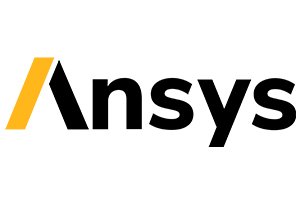
Key takeaways
- Ethan Keller, Senior Manager of Corporate Treasury at Ansys, needed to lead the treasury team on an EMEA transformation initiative to centralize the company’s liquidity
- Keller successfully set up a multi-entity, multicurrency notional pool at the J.P. Morgan Luxembourg hub. Using host-to-host integration with Ansys’ Oracle, enterprise resource planning, payments and bank reporting are fully automated
- Ansys has rationalized over 80 bank accounts and made $550 million of the company’s global cash easily accessible. The company now has greater visibility of cash flows and increased flexibility in its cash management in the EMEA region

About
Ansys stands as a leading engineering simulation software firm, known for its groundbreaking solutions that enable engineers and designers to simulate, optimize and refine designs across diverse industries.¹ Through cutting-edge technology, Ansys empowers organizations to accelerate product development, improve performances and drive transformative change.
When Keller joined Ansys in 2018, he saw the importance of centralizing cash management and pursuing an automated liquidity structure to elevate the company’s global operations. He spearheaded Ansys’ treasury transformation initiative, creating a multicurrency and multi-entity notional pool for the company’s entities in EMEA.
The challenge
When Keller joined the treasury team, Ansys faced a dilemma. It had established itself as a publicly traded organization with global operations, but it needed to bolster the treasury department’s technology and liquidity solutions. As the company grew rapidly through acquisitions, its business and banking operations became decentralized. Ansys relied heavily on small local teams to provide cash availability forecasting.
As an engineering software firm that leverages predictive simulations to push the boundaries of what’s possible, Ansys’ leadership agreed that modernizing the treasury’s financial technology to match its products was critical to keep delivering innovative solutions. The company embarked on an EMEA treasury transformation initiative to focus on centralizing liquidity through notional pooling. Its first step was to choose J.P. Morgan as its EMEA bank.
The solution
Heading up a small team of analysts, Keller set up the company’s notional pool at the J.P. Morgan Luxembourg hub. These pools enable Ansys to be more aggressive in repatriating cash from the EMEA region to the U.S. for its strategic outflows. As a software company, Ansys benefits from automating intercompany flows because it can efficiently pivot funds to its next project. “Small but mighty is the name of the game here at Ansys,” says Keller. “This project was intended to concentrate as much cash and payments activity as possible with J.P. Morgan, resulting in an efficient structure that can be managed by very few people.”
Overall, he shared that the company was able to rationalize over 80 bank accounts across 27 different banks. The treasury transformation provides enhanced control and visibility of $550 million of the company’s global cash. Payments and bank reporting are all automated via host-to-host integration with its J.P. Morgan Embedded Solutions for NetSuite/Sage Intacct/Business Central, which are centralized in Ansys’ headquarters in Pittsburgh.
“Our collaboration with J.P. Morgan has been effortless,” says Keller. “We can create even better solutions with a collaborative approach to banking.”
The results
Following the successful transformation, Ansys is now expanding this pool worldwide to include APAC liquidity.
Under Keller’s direction, Ansys recently developed an automated cash position forecast outside its treasury management system. The forecast will eventually be applied to use cases like tracking cash flow variance. Keller continues to focus on refining solutions like these to help Ansys stay resilient amid evolving market trends.
To learn more, visit https://www.jpmorgan.com/payments/treasury-ignition.
Disclaimer
© 2024 JPMorgan Chase & Co. All rights reserved. JPMorgan Chase Bank, N.A. Member FDIC. Deposits held in non-U.S. branches are not FDIC insured. Non-deposit products are not FDIC insured. The statements herein are confidential and proprietary and not intended to be legally binding. Not all products and services are available in all geographical areas. Visit jpmorgan.com/paymentsdisclosure for further disclosures and disclaimers related to this content.
Related insights

Payments
Instant payments: Understanding real-time payment networks
Apr 16, 2025
Learn about real-time payments and how they can benefit your business
Read more
Payments
IVECO PAY: Adam Smith Award-winning solution
Apr 16, 2025
Learn how the multinational transport vehicle manufacturing company Iveco Group is transforming the customer journey with IVECO CAPITAL’s digital payment hub.
Read more